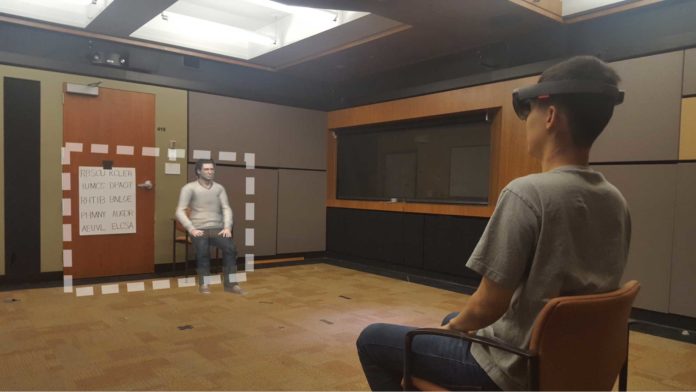There have been decades of research on the usability and educational value of augmented reality. However, less is known about how augmented reality affects social interactions.
In a new study by Stanford University, scientists found that after interaction with augmented reality (AR), people’s interaction with the real world also changed, even with the AR device removed. For example, people avoided sitting on a chair they had just seen a virtual person sit on. It means participants seemed to be affected by the presence of a virtual person in a similar way they would be if a real person next to them.
Jeremy Bailenson, a professor of communication in the School of Humanities and Sciences said, “We’ve discovered that using augmented reality technology can change where you walk, how you turn your head, how well you do on tasks, and how you connect socially with other physical people in the room.”
Scientists recruited 218 participants and conducted three studies to test the social psychological effects of augmented reality.
Study 1 examined participants’ task performance in the presence of embodied agents and replicated the typical pattern of social facilitation and inhibition. Participants performed a simple task better, but a hard task worse, in the presence of an agent compared to when participants complete the tasks alone.
In the second study, scientists tested whether participants would follow accepted social cues when interacting with avatar Chris. This was measured by tracking whether participants would sit on the chair that avatar Chris previously sat on. Scientists found that all participants who wore the AR headset sat on the empty seat beside Chris instead of sitting appropriately on the avatar. Of those participants who were asked to remove the headset before choosing their seat, 72 percent still sat in the vacant seat beside where Chris sat previously.
In the third study, researchers examined how AR affects the social connection between two people who are having a conversation while one of them wears an AR headset. Researchers found that those wearing AR goggles reported feeling less socially connected to their conversation partner.
Overall, these studies provide evidence suggesting that task performance, nonverbal behavior, and social connectedness are significantly affected by the presence or absence of virtual content.
Bailenson said that additional studies, which he and his team are now working on, are needed to further examine the effects of augmented reality.
Scientists noted, “This paper scratches the surface of the social-psychological costs and benefits of AR use, but much research is needed to understand the effects of this technology as it scales.”
These findings are set to publish May 14 in PLOS ONE.
